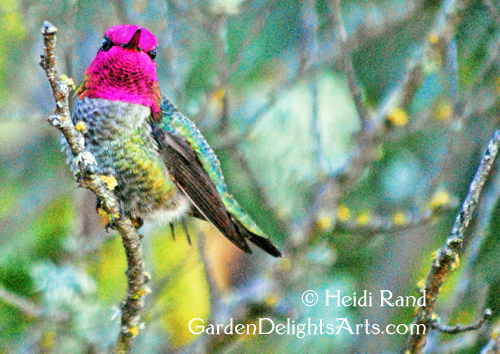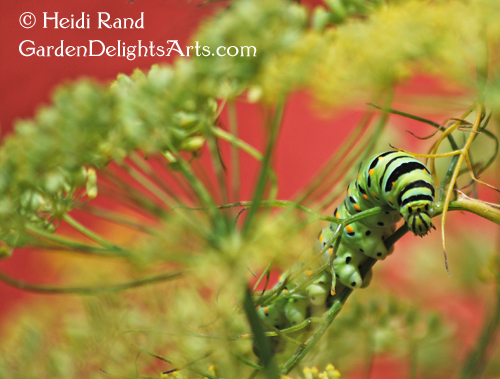For the last oh-don’t-even-ask-how-many years I’ve created a calendar to give George for Christmas. I design 12 pages of my photos from the year, each with a different category from our lives together, and a “Greatest Hits” cover. My walk down Memory Lane means hours poring through all of the year’s images (more than 3,000 in 2014) to pick out the treasures, which I collage into pages for each month. This is the May page: Bees!

During my journey through 2014, I pulled out 12 of my favorites to show off. First, this closeup photo of a honeybee landing on a fennel flower went onto the calendar’s cover.

I shot this beautiful Great Blue Heron strolling through a field next to the driveway at Ardenwood Farm, our favorite East Bay Park.

I love the colors, and the delicate and intricate swoops of this bromeliad flower (Billbergia nutans) that bloomed in our garden in January.

In February, George worked hard behind the scenes at the Pacific Orchid Exposition. I’m so proud of his accomplishments as current president of the San Francisco Orchid Society!

We found some glorious Calypso Orchids during our hike on Mount Tam in March.

Of the zillion hummingbird photos I took this year, I love the attitude of this Anna’s, and his glorious magenta crown.

George’s Tiger Lilies bloomed in July, just in time for our birthdays!

Speaking of birthdays – we celebrated George’s at the fabulous Oakland Zoo. He wants this lion tattooed over his heart, what do you think?

Of my many 2014 photos of our children, this is my favorite of the furry ones. Daisy is our one-year old sweet and rambunctious young lady, and Lars our wonderful round-faced Russian Blue. It took a while, but they finally get along (well, mostly).

And I can’t leave out my top photo of our feathered children – George cuddling Maureen and Louise while Gloria waits for a space on his lap.

Sadly, we didn’t find many monarch butterflies on Albany Hill for the annual Western Monarch Thanksgiving Count. Several flew around, but we saw no clusters. This one rested on a tree branch. To compare, click here to see my 2011 blog post — a photo near the end of the post shows a large cluster of monarchs in the eucalyptus grove on the Hill.

2014 was a bumper year for Anise Swallowtail butterflies, though. This caterpillar happily munched on the fennel in our garden.

Do you keep a journal, or go through your photos at the end of the year? I’d love to hear about your favorites! Wishing you all sweet memories of 2014, and many more for 2015.














































